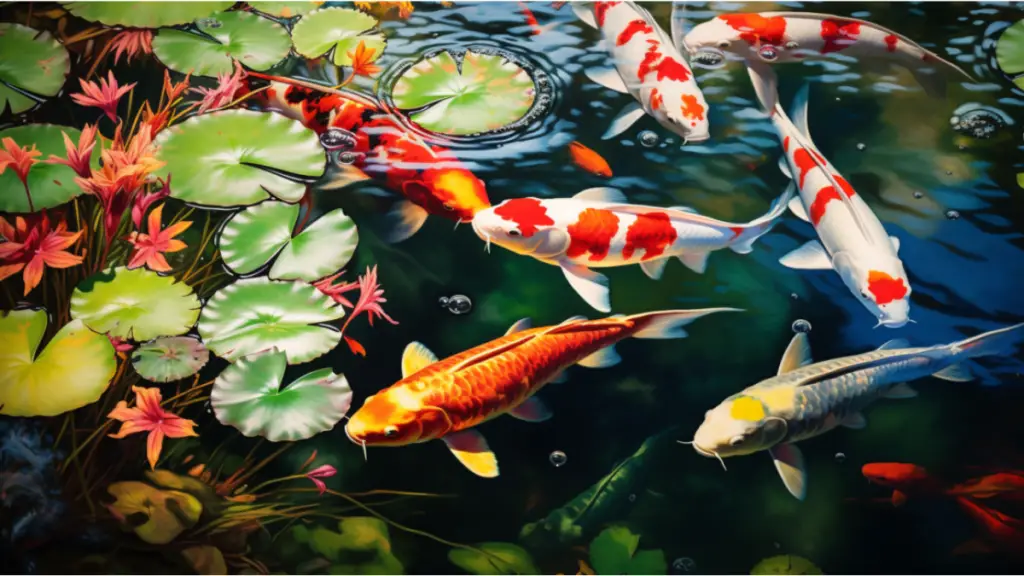As you admire your pond’s peaceful water, you notice the unsightly algae trying to stake its claim.
You’ve got a natural way to handle this: introduce fish that eat algae.
You’ll see how adding certain species, like the hardworking plecostomus or the graceful Siamese algae eater isn’t just about beauty; it’s about balance.
They’ll graze on that unwanted greenery, keeping your waters clear and your ecosystem thriving.
So, as you’re considering your options, remember that these fish aren’t just decoration; they’re part of your pond’s health team.
Enjoy the dual benefits of aquatic pets that keep your pond in tip-top shape.
Key Takeaways
- Adding algae-eating fish to your pond can help control and manage algae growth without resorting to harsh chemicals. Species like koi and goldfish are beautiful and serve a practical purpose in maintaining balance and a healthier pond environment.
- Siamese algae eater, Grass Carp, and Plecostomus are efficient algae-eating fish that can be considered for a pond. Smaller species like the otocinclus catfish and Japanese trapdoor snails can also contribute to algae control efforts.
- Japanese trapdoor snails are particularly effective at eating algae and can withstand colder temperatures and do not reproduce rapidly, preventing overpopulation.
- Algae management tips include integrating algae-eating fish that fit your pond size and climate, strategically placing aquatic plants, regularly cleaning debris and uneaten food to avoid nutrient build-up, and considering a UV filtration system to target and neutralize microscopic algae.
- The benefits of having algae-eating fish in your pond include keeping the water clean and oxygen-rich, supporting a vibrant pond ecosystem, and reducing the need for manual cleaning and maintenance.
Understanding Pond Algae
To effectively manage your pond’s health, it’s essential to recognize that some algae are natural and beneficial, while others can signal underlying issues. Various types of algae coexist in your pond, and while algae growth is a normal part of any aquatic ecosystem, you need to keep an eye on it. Excessive algae growth, accelerated by prolonged sunlight and overfeeding fish, can deplete oxygen and harm your pond’s inhabitants.
Adding algae-eating fish can help you control the algae without resorting to harsh chemicals. Species like koi and goldfish aren’t only beautiful and serve a practical purpose. They naturally graze on algae, maintaining balance and contributing to a healthier pond environment.
Top Algae-Eating Pond Fish
You’ll find that the koi and goldfish are among the top algae-eating fish for your pond, offering both beauty and a natural solution for algae control. While they’re popular, there are other efficient algae-eaters to consider:
- Siamese Algae Eater: This fish is a voracious consumer of algae and can be a great addition to keep your pond clean.
- Grass Carp (Ctenopharyngodon idella): Known for their appetite for certain algae and pond plants, they can help balance your pond’s ecosystem.
- Plecostomus: Often referred to as ‘plecos’, these fish are excellent algae cleaners, although they grow quite large and are suitable for bigger ponds.
Don’t overlook smaller species like the otocinclus catfish, which are also effective, and adding Japanese trapdoor snails can augment your algae control efforts.
Snails as Algae Controllers
In your quest for a pristine pond, snails serve as unsung heroes in the battle against algae. Japanese trapdoor snails stand out for their algae-eating abilities among the various types. These trapdoor snails are particularly effective as they can withstand colder temperatures and don’t reproduce as rapidly as other pond snails, preventing overpopulation.
To highlight their benefits, consider this comparison table:
| Snail Type | Algae Eating | Cold Tolerance |
|---|---|---|
| Japanese Trapdoor | High | Excellent |
| Nerite | Moderate | Good |
| Apple | Low | Poor |
| Common Pond Snail | Moderate | Moderate |
These snails are a natural, low-maintenance solution for keeping your ponds clear. Remember, while fish are great allies, snails are essential for a comprehensive algae control strategy.
Algae Management Tips
Having explored the role of snails in algae control, let’s focus on five essential tips to effectively manage algae in your pond.
First and foremost, integrate algae-eating fish that fit your pond size and climate; these natural cleaners will help reduce algae without harming your pond’s ecosystem.
Here are three crucial strategies to keep pond algae at bay:
- Strategically place aquatic plants to outcompete algae for nutrients and light, preventing algae blooms.
- Regularly clean debris and uneaten fish food to avoid nutrient build-up that fuels algae growth.
- Consider a UV filtration system to target and neutralize microscopic algae, keeping your water clear.

Benefits of Algae-Eaters
Integrating algae-eating fish into your pond’s ecosystem offers a natural solution to help maintain the delicate balance of its environment.
With algae-eaters like Otocinclus Catfish and Siamese Algae Eaters, you’re not just adding variety to your pond fish; you’re enlisting a specialized crew to control algae.
These pond allies voraciously eat algae, ensuring your pond doesn’t suffer from excessive growth, which could otherwise deplete oxygen levels and harm other aquatic life.
The benefits of having algae-eaters are clear: they keep the water clean and oxygen-rich, supporting a vibrant pond ecosystem.
Plus, the natural algae control they provide means you’ll spend less time scrubbing and more time enjoying your beautiful, balanced pond.
Frequently Asked Questions
Conclusion
You’ve got quite the team in your backyard pond, each algae-eater doing its part to maintain balance. Embrace these natural helpers as they munch away on that pesky green intruder, making algae management a breeze.
With your underwater allies at work, you’ll keep your pond pristine and thriving. So sit back, relax, and enjoy your clear-water sanctuary, all thanks to the unsung heroes of your aquatic ecosystem.
They’ve got your back and your pond’s health covered.
